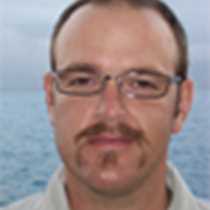Santa Cruz
The anticipation was high as we moved closer to the giant tortoises of Galápagos. This morning we anchored in Academy Bay at Puerto Ayora, which holds the Charles Darwin Research Station and the National Park administration offices. This island was one of the last to have a colonizing human population due to its rough southern coastal access, however this island has a rich diversity of unique life.
Arriving at the Research Station we learned first hand about the rearing and breading in captivity programs that have saved certain tortoise populations from certain extinction. It is hard to believe that these tortoises weighing no larger then a pound will grow to upwards of 400-500 lbs. These gentle creatures have few areas on earth where their “family” remains, Galápagos being one of two regions left. The National Park and Research Station are securing the future of this species while various programs are in play to eliminate invasive species that threaten their existence.
After seeing conservation biology at work we had a chance to explore Puerto Ayora which contains approximately 15,000 residents. It is interesting to see the interaction between humans and the local wildlife such as a sea lion that is consistently watching for fishermen that are cleaning their fish at the dock. Pelicans perching on the roofs that line the waterfront are looking for movement in the shallows of the coastline. Guests casually stroll along the back streets to witness the local “vibe” and lifestyle.
After exploring town, we boarded our transportation to the highlands for a deeper exploration of Santa Cruz Island. Before arriving to our destination we stopped to take a peek at a local school. The Tomas de Berlanga school is a proper demonstration of bringing kids into contact with nature; classrooms have open windows allowing in air and nature, including mockingbirds. A Darwin Finch landed on a desk as a student watched and experienced her education.
Exploration of a lava tube before lunch taught us about the tumultuous and volcanic past of the Galápagos. Lunch was a hearty affair that gave us the necessary energy to continue into the afternoon as we still had “searching for giant tortoises in the wild” on our agenda.
The area we explored was directly in the migratory path of the Santa Cruz population of the giant tortoise. Various tortoises were found in the grasslands. Some surely were mistaken for large boulders. We had time to enjoy these gentle giants in their environment. Their slow pace reminded many of us what is important in life.
Further exploration of the highlands brought us to a cloud forest that had some of the largest members of the sunflower family found on earth. We were within view of two massive pit craters that were formed during the upheaval of this island. Tree ferns, orchids, and grasslands showed us a different view of this “hidden” world. Darwin finches abounded and we were lucky to encounter a carpenter finch, which is one of a very exclusive club, one of the only tool-using animals on earth.
What a wondrous day we have encountered here on Santa Cruz!




